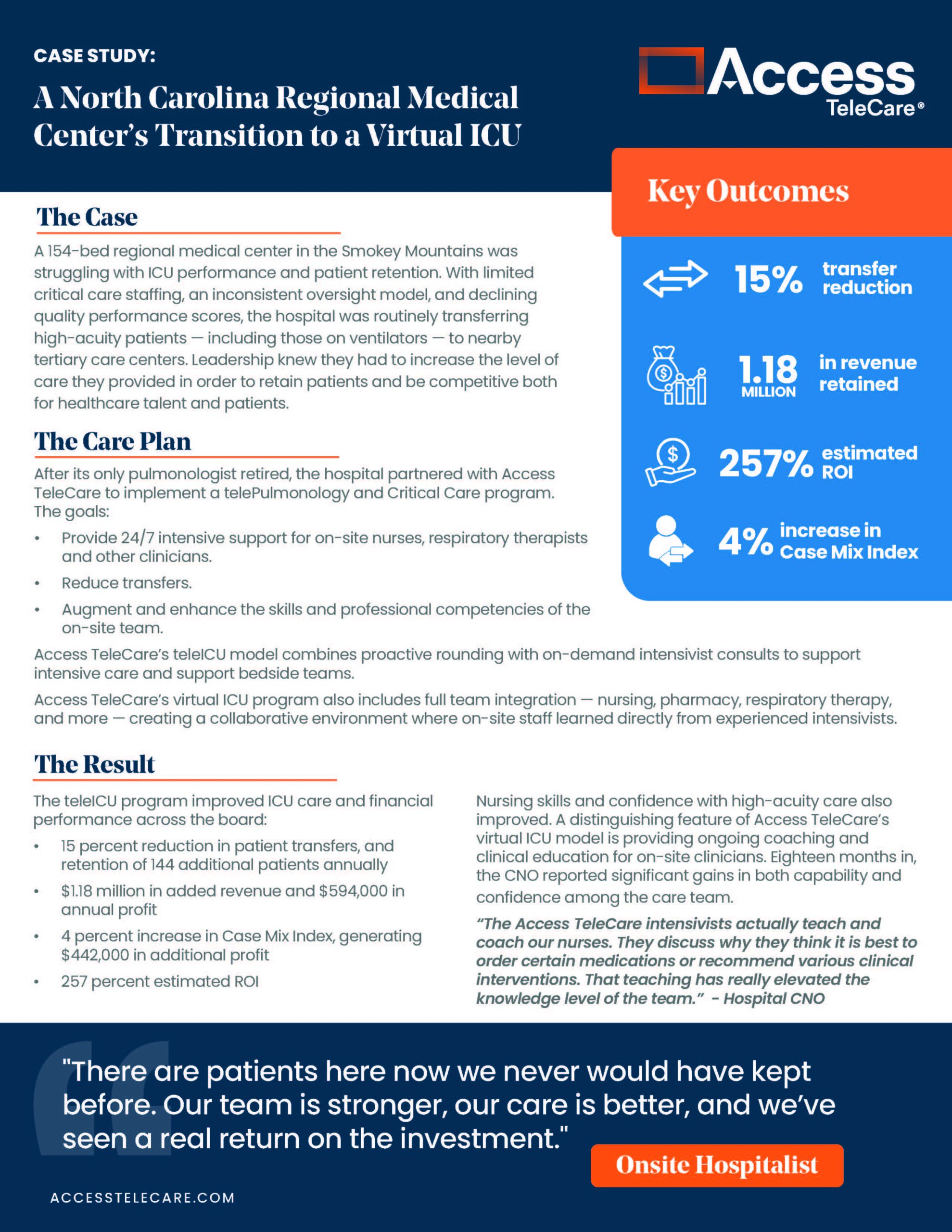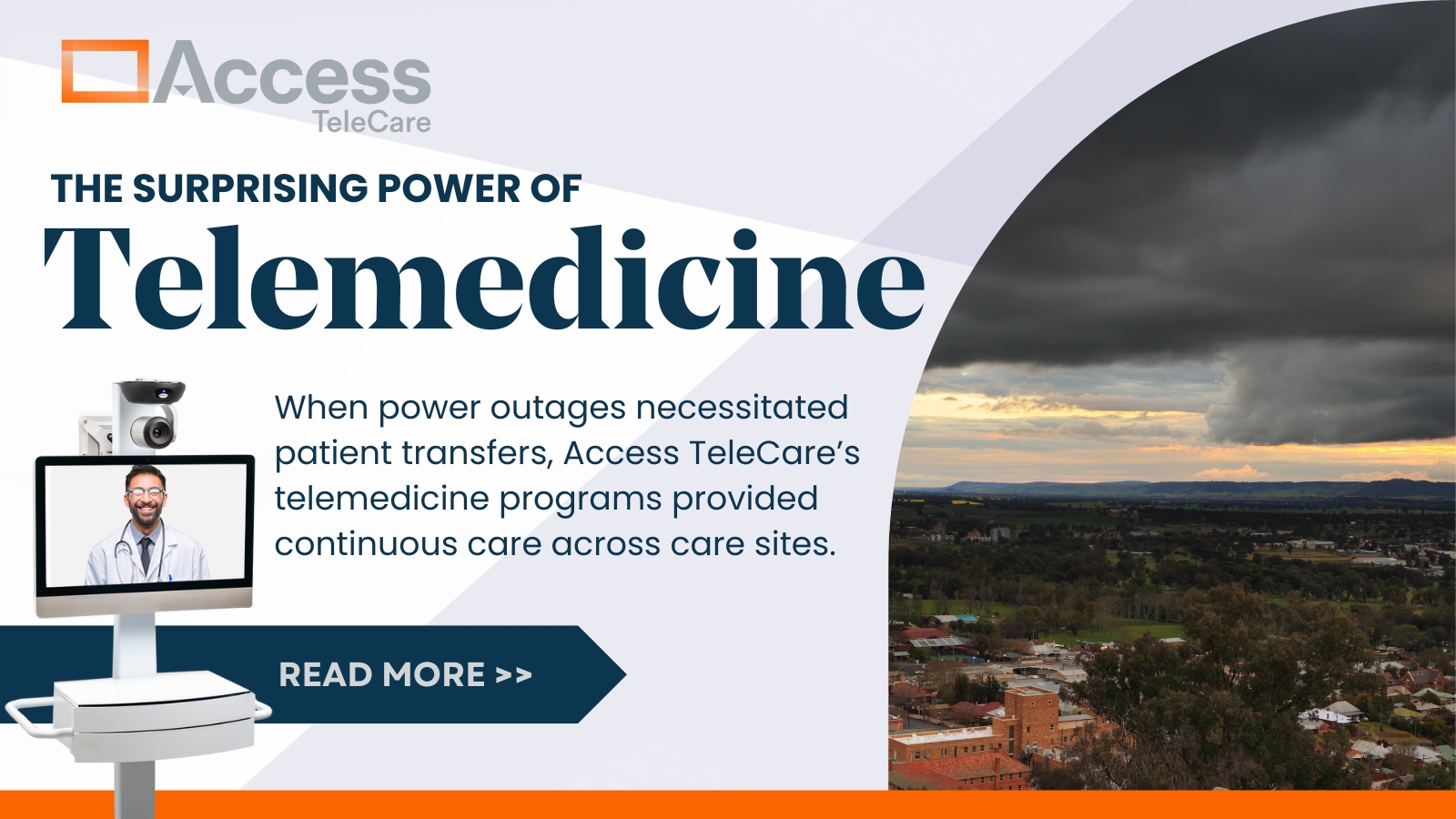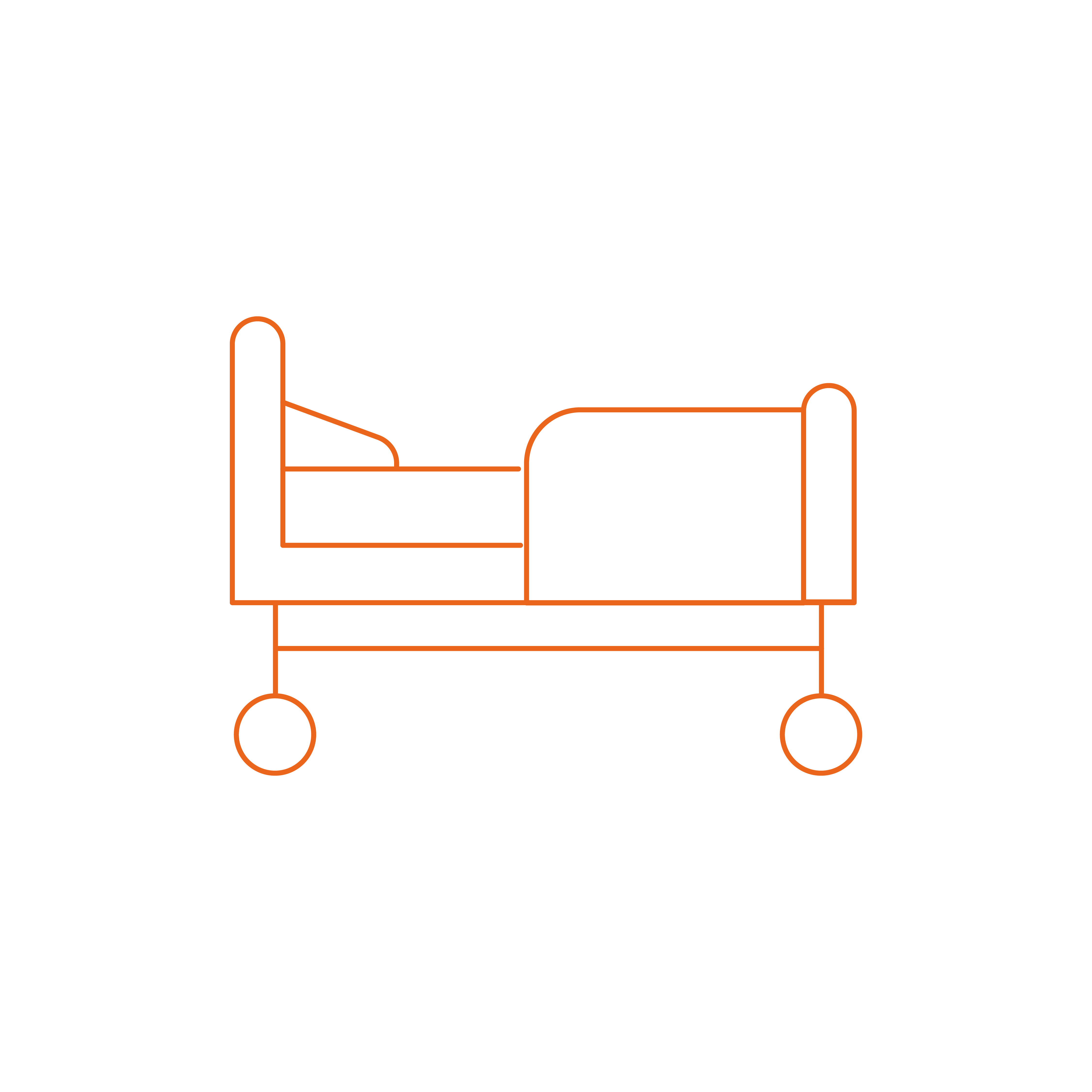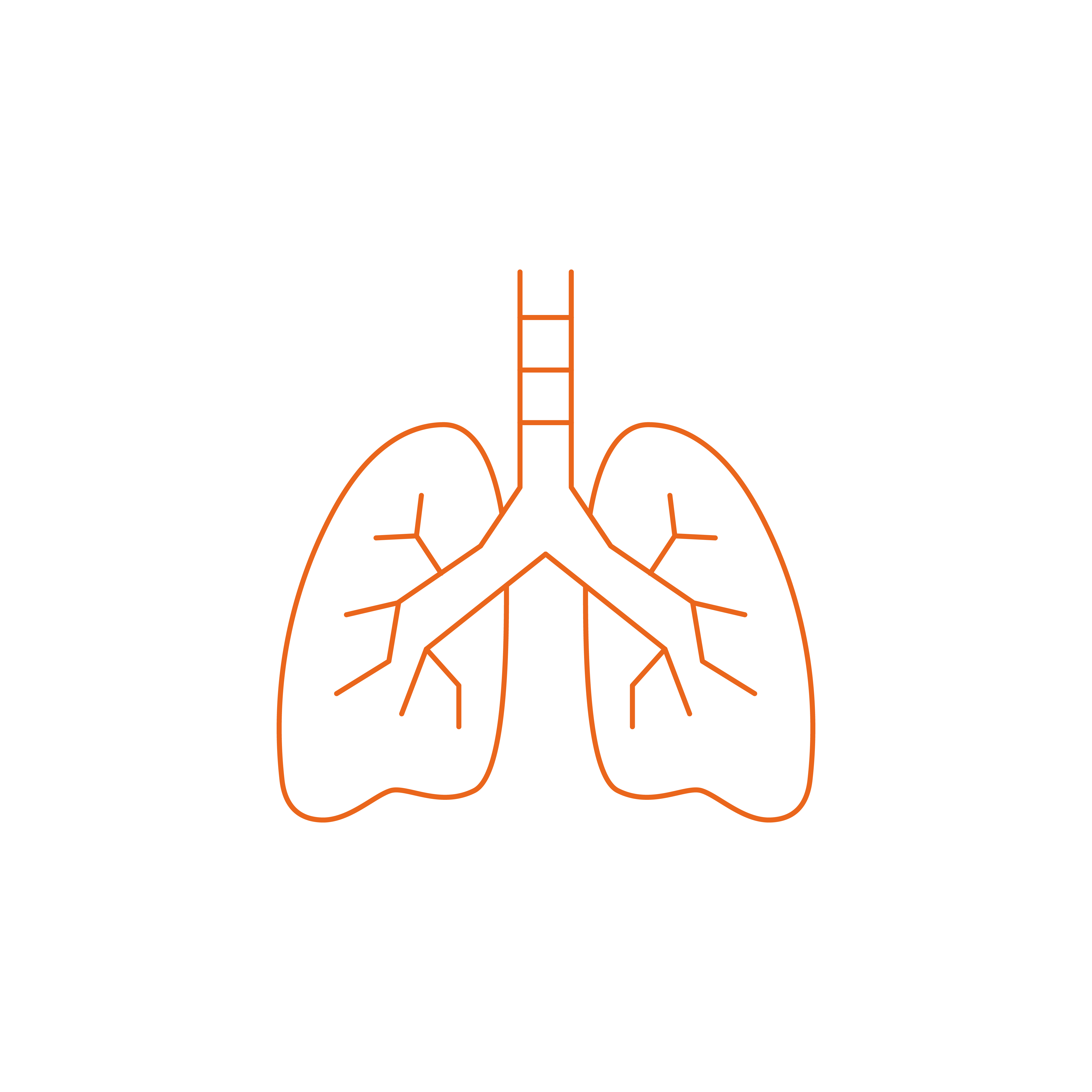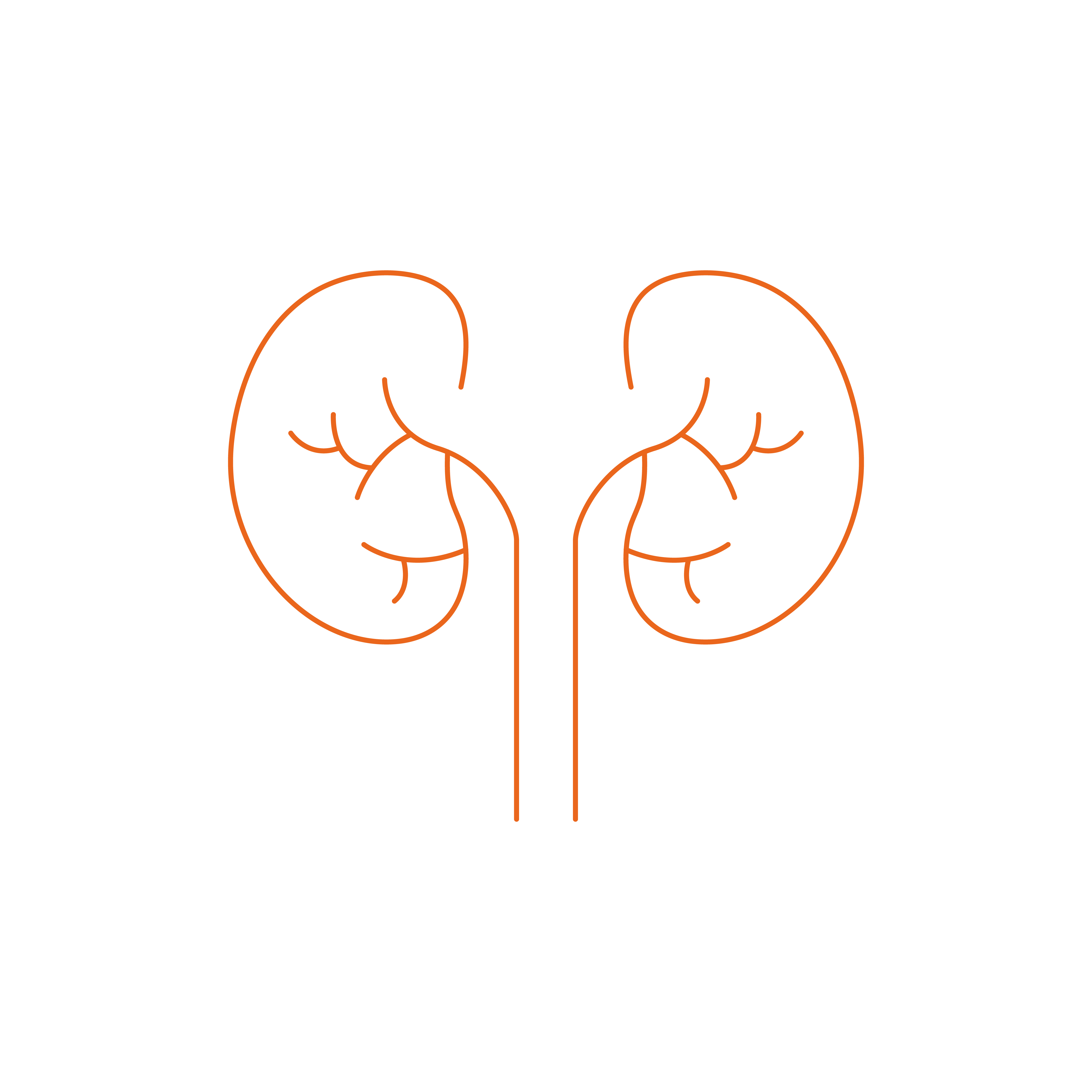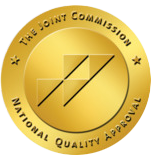A North Carolina regional medical center’s transition to a virtual ICU
Access TeleCare Case Study
Within months of Access TeleCare’s telePulmonary and Critical Care program, the hospital reduced transfers by 15 percent, retained 144 additional patients a year, and saw a 257 percent return on investment.
Hospital Telemedicine Solutions
The Challenge
A 154-bed regional medical center in the Smokey Mountains was
struggling with ICU performance and patient retention. With limited critical care staffing, an inconsistent oversight model, and declining quality performance scores, the hospital was routinely transferring high-acuity patients — including those on ventilators — to nearby tertiary care centers. Leadership knew they had to increase the level of care they provided in order to retain patients and be competitive both
for healthcare talent and patients
The Solution
After its only pulmonologist retired, the hospital partnered with Access TeleCare to implement a telePulmonology and Critical Care program to:
• Provide 24/7 intensive support for on-site nurses, respiratory therapists and other clinicians.
• Reduce transfers.
• Augment and enhance the skills and professional competencies of the on-site team.
As with all Access TeleCare specialty telemedicine programs, the hospital had access to a dedicated pod of specialists who worked with on-site teams on treatment protocols, rapid response, EMR documentation, and care transition planning.
“There are patients here now we never would have kept before. Our team is stronger, our care is better, and we’ve seen a real return on the investment.”
– On-site Hospitalist
Access TeleCare’s teleICU model combines proactive rounding with on-demand intensivist consults to support intensive care and support bedside teams.
Access TeleCare’s virtual ICU program also includes full team integration — nursing, pharmacy, respiratory therapy, and more — creating a collaborative environment where on-site staff learned directly from experienced intensivists.
Learn more about our programs and how comprehensive telemedicine programs can transform specialty care for your hospital.
Results
15% Transfer Reduction
15% Transfer Reduction
After launching a teleStroke program, the health system saw a decrease of 15 percent in transfers after adding telePulmonary and Critical Care coverage.1.18 Million in Revenue Retained
1.18 Million in Revenue Retained
With telemedicine, the hospital saw 1.18 million-dollars in revenue retained.257% ROI
257% ROI
The hospital achieved a 257-percent ROI after implementing a telePulmonay and Critical Care telemedicine program.$442,000 in Added Revenue
4% Increase in Case Mix Index
Due to the hospital being able to diversify their case mix index by after adding telePulmonary and Critical Care services by four-percent, the hospital saw a $442,000 in added revenue.
The Result and Key Outcomes
The teleICU program improved ICU care and financial performance across the board:
• 15 percent reduction in patient transfers, and retention of 144 additional patients annually
• $1.18 million in added revenue and $594,000 in annual profit
• 4-percent increase in Case Mix Index, generating $442,000 in additional profit
• 257 percent estimated ROI
Nursing skills and confidence with high-acuity care also improved. A distinguishing feature of Access TeleCare’s virtual ICU model is providing ongoing coaching and clinical education for on-site clinicians. Eighteen months in, the CNO reported significant gains in both capability and confidence among the care team.
“The Access TeleCare intensivists actually teach and coach our nurses. They discuss why they think it is best to order certain medications or recommend various clinical interventions. That teaching has really elevated the knowledge level of the team.” – Hospital CNO

